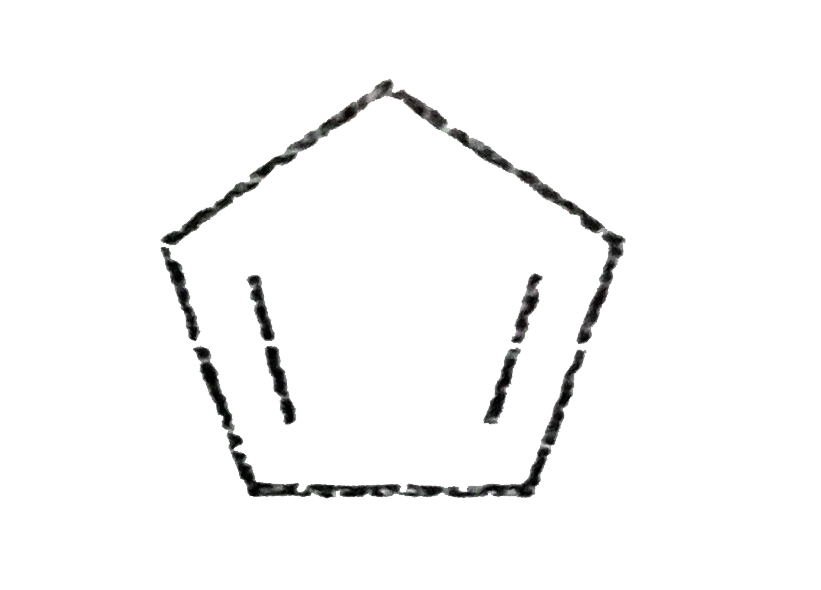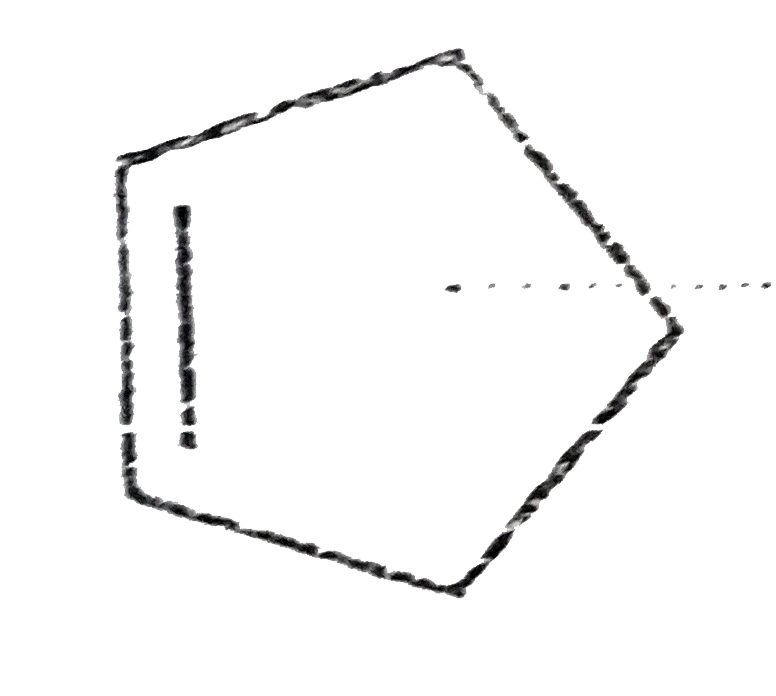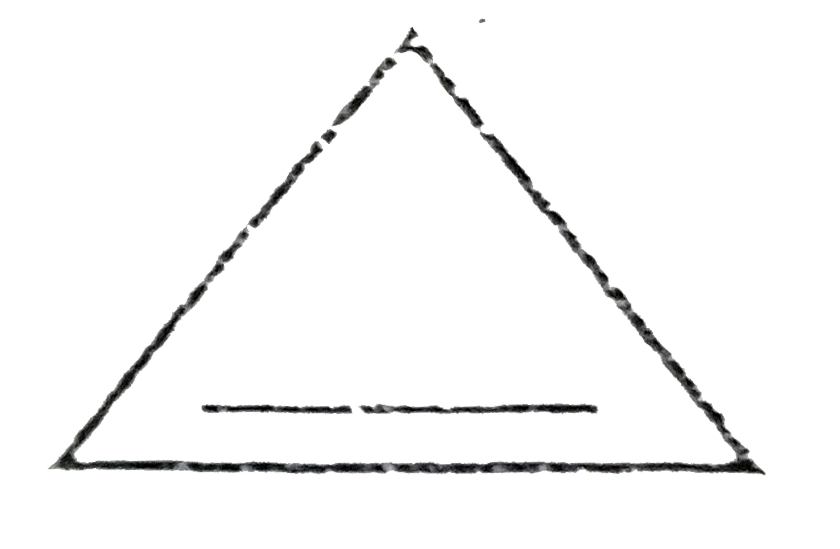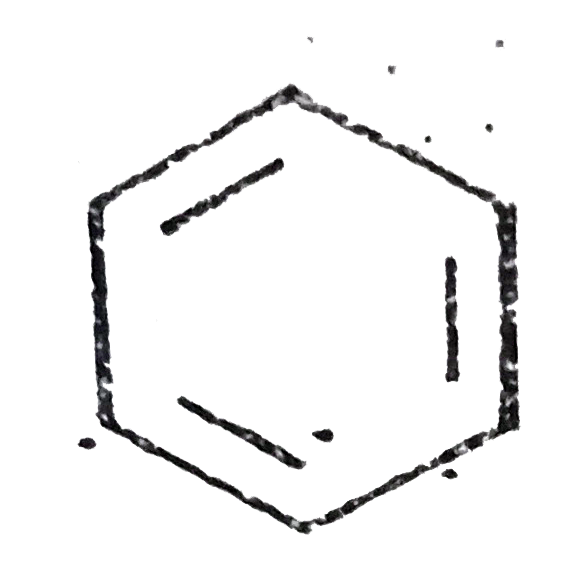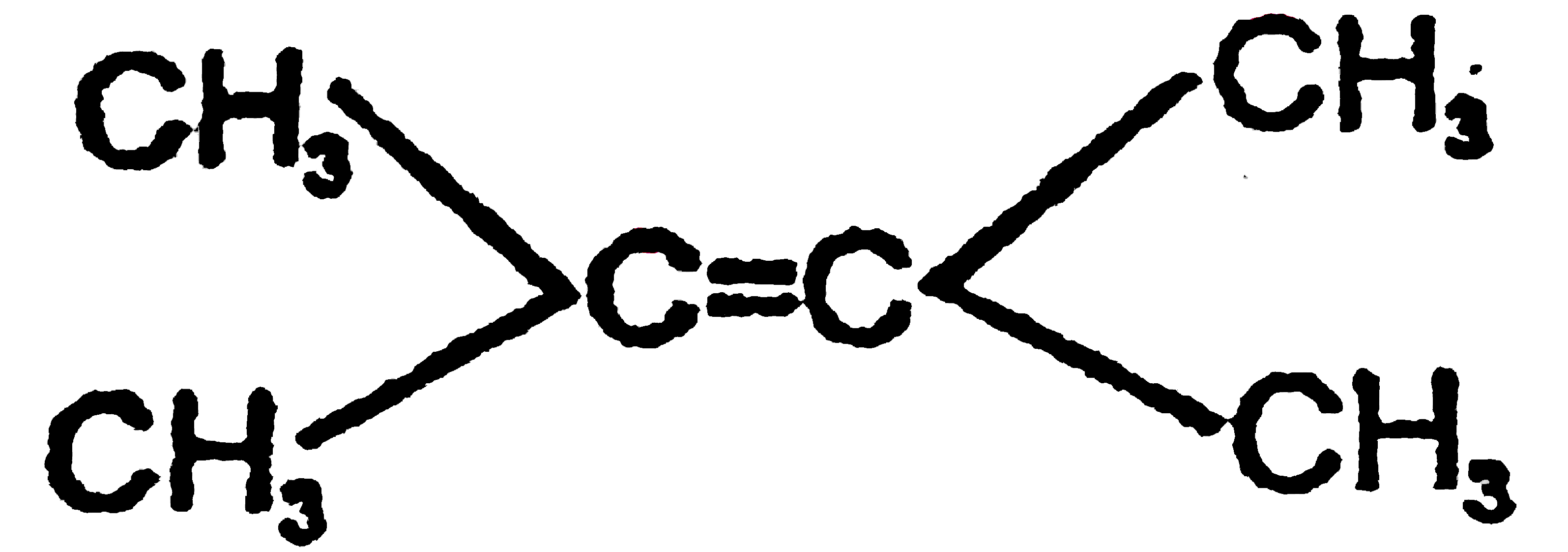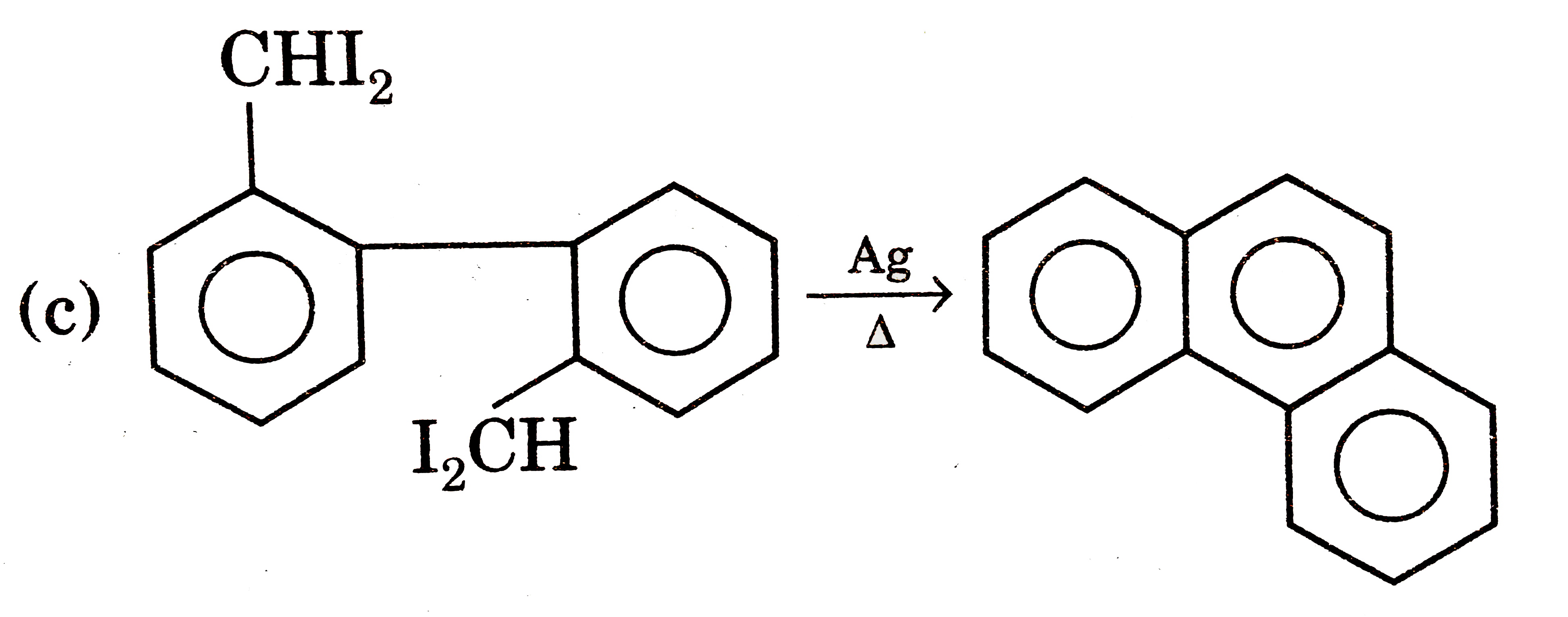Explore topic-wise InterviewSolutions in .
This section includes InterviewSolutions, each offering curated multiple-choice questions to sharpen your knowledge and support exam preparation. Choose a topic below to get started.
| 18101. |
Which is (are) amorphous solids? |
|
Answer» Rubber |
|
| 18102. |
What are the different types of RNA found in the cell ? |
|
Answer» SOLUTION : There are three types of RNAS : (i)Ribosomal RNA (TRNA). (ii) Messenger RNA (mRNA). (iii)Transfer RNA (TRNA). |
|
| 18103. |
Which of the following process not lead to formation of isobars? |
|
Answer» `1 alpha` particle and `2 beta` PARTICLES are emitted `_(X-2)B^(Z-4) rarr `_(X-1)C^(Z-4)+ `_(-1)e^(0)``` `_(X-1)C^(Z-4) rarr `_(X)D^(z-4)+ `_(-1)e^(0)``` |
|
| 18104. |
Write the IUPAC nomenclature of the following complex along with its hybridisation and structure. K_(2)[Cr(NO)(NH_(3))(CN)_(4)], mu=1.73 BM |
|
Answer» Solution :`mu =sqrt(n(n+2))=1.73` which gives n = 1 This MEANS that CHROMIUM ion has one unpaired electrons, i.e., it is present as `Cr^(+)` or Cr (I). This implies that NO is present as nitrosonium ion. Hence, the NAME will be potassium amminetetracyanonitrosonium chromate (I)  In the complex, as there is only one unpaired electron and coordination number is 6, it will become  i.e., it will undergo `d^(2)sp^(3)` HYBRIDISATION to give octahedral geometry. 
|
|
| 18105. |
Which of the following hydrocarbon is most stable? |
|
Answer»
|
|
| 18106. |
Which of the following is not used in nail polish? |
|
Answer» CELLULOSE nitrate |
|
| 18107. |
Write the monomers used for getting the following polymers. (i) Polyvinyl chloride (ii) Teflon (iii) Bakelite. |
Answer» SOLUTION :
|
|
| 18108. |
What happens when dialysis is prolonged ? |
| Answer» Solution :The electrolytes STABILISE the colloidal solution. On prolonged dialysis, the traces of electrolytes are REMOVED completely that results in a COAGULATION of sol particles. | |
| 18109. |
Which of the following carbides gives methane on treatment with water ? |
|
Answer» Aluminium CARBIDE |
|
| 18111. |
The reagent that with nitromethane to form methylhydroxylamine is |
|
Answer» `Zn//HCl` |
|
| 18112. |
Which of the following compound will not undergo azo coupling reaction reaction with benzene diazonium chloride. |
|
Answer» Aniline |
|
| 18113. |
What are the oxidation products of glycerol ? |
|
Answer» SOLUTION :Glycerol can give rise to a variety of OXIDATION products depending on the nature of the OXIDISING agent used for oxidation. (i) Oxidation of glycerol with dil. `HNO_(3)` gives glyceric acid and tartronic acid. (ii) Oxidation of glycerol with Conc. `HNO_(3)` gives mainly glyceric acid. (iii) Oxidation of glycerol with bismuth nitrate gives as meso oxalic acid. (iv) Oxidation of glycerol with `Br_(2)//H_(2)O` (or) NaOBr (or) Fenton reagent `(FeSO_(4) + H_(2)O_(2))` gives a mixture of glyceraldehyde and dihydroxy acetone (This mixture is named as GLYCEROSE). |
|
| 18114. |
Which substance can be used for drying basic gases : |
|
Answer» `CaCO_3` |
|
| 18115. |
Which one of the following is used as an electrolyte in H_2O_2 fuel cell? |
|
Answer» AQUEOUS `CuSO_4` |
|
| 18116. |
What is the position of d-block elements ? |
| Answer» SOLUTION : d-block ELEMENTS are PLACED in between s-blockelements and p-block elements. | |
| 18118. |
When KCl is heated with conc. H_(2)SO_(4) and solid K_(2)Cr_(2)O_(7), we get |
|
Answer» CHROMIC oxide |
|
| 18119. |
Which sweetening agents are used to prepare sweets for a diabetic patient? |
|
Answer» SOLUTION :Artificial sweetening AGENTS such as, (i) saccharin (ii) ALITAME (iii) Aspartame can be used in preparing sweets for diabetic PATIENTS. |
|
| 18120. |
Which of the following amine is optically active ? |
|
Answer» `CH_3NH_2` |
|
| 18121. |
The right order of the solubility of sulphates of alkaline earth metals in water is |
|
Answer» BegtCagtMggtBagtSr On moving down the the group lattice energy remains almost constant as the sulphate is so BIG that small increases in any size of the cations from Be to Ba does not make any difference. However the hydration energy decreases from `Be^(+2)` to `Ba^(+2)` . this causes decreases in the SOLUBILITY of the sulphates as the IONIC size increases. |
|
| 18122. |
The salt which least likely to be found in minerals is |
|
Answer» SULPHATE |
|
| 18123. |
To prevent corrosion, iron pipes carrying drinking water are coated with zinc. The process involved is: |
|
Answer» ALLOY formation |
|
| 18124. |
The species having pyramidal shape is :- |
|
Answer» `OSF_(2)` |
|
| 18125. |
the units for the rate constant and the rate of reaction are same for a reaction .What will be the order reaction |
|
Answer» Second UNIT of K=mole/liter |
|
| 18126. |
Which of the following order is/are correct? |
|
Answer» `Mg^(2+)("SIZE") GT Li^(+)` (size) |
|
| 18127. |
Write short notes on the following (i) Hoffmann's bromide reaction (ii) Ammonolysis (iii) Gabriel phthalimide synthesis (iv) Schoten-Baumann reaction v. Carbylamine reaction vi. Mustard oil reaction vii. Couplingreaction viii. Diazotisation ix. Gomberg reaction. |
|
Answer» Solution :i. Hoffmann.s bromide reaction: When Amides are treated with bromine in the presence of aqueous or ethanolic solution of KOH, primary amines with one carbon atom less than parent amides are obtained. `UNDERSET("amide")(R-)overset(O)overset(||)(C)-NH_(2)overset(Br_(2)//KOH)(to) underset("Primary amine")(R-NH_(2)+K_(2))CO_(3)+KBr+H_(2)O` R=Alkyl (or) Aryl (ii) Amkonolysis: When Alkyl halides (or) benzylhalides are heated with alcoholic ammonia in a sealed tuber MIXTURES of `1^(@), 2^(@)` and `3^(@)` amines and quanternary ammonium salts are obtained. `CH_(3)-Brunderset(Delta)overset(overset(..)(N)H_(3))(to) underset(1^(@)-"amine")(CH_(3)-overset(..)(N)H_(2))overset(CH_(3)-Br)(to) underset(2^(@)-"amine")((CH_(3))_(2)overset(..)(N)H)overset(CH_(3)Br)(to) underset(3^(@)-"amine")((CH_(3))_(3)overset(..)(N))overset(CH_(3)Br)(to) underset("Quarternary ammonium bromide")((CH_(3))_(4)overset(+)(N)Br^(-))` (iii) Gabriel phthalimide synthesis Gabriel synthesis is used for the preparation of Aliphatic amines. Phthalimide on treatment with ethanolic KOH forms potassium salt of phthalimide which on heating with alkyl halide followed by ALKALINE hydrolysis gives primary amine.  (iv). Schotten- Baumann reaction: Aniline reacts with benzoylchloride `(C_(6)H_(5)COCl)` in the presence of NaOH to give acylation and benzoylation are nucleophilic substitutions. `underset(("Aniline"))(C_(6)H_(5)-NH_(2))+underset(("Benzoylchloride"))(C_(6)H_(5)-overset(O)overset(||)(C)-Cl)overset(NaOH)(to) underset((N-"phenyl benzamide"))(C_(6)H_(5)-NH-overset(O)overset(||)(C)-C_(6)H_(5))+HCl` v. Carbylamine reaction: Aliphatic (or) aromatic primary amines react with chloroform and a alcoholic KOH to give isocyanides (CARBYLAMINES), which has an unpleasant smell. This reaction is knwon as carbylamines test. This test used to identify the primary amines. `underset("Ethylamine")(C_(2)H_(5))-NH_(2)+underset("Chloroform")(CHCl_(3))+3KOH to underset("Ethylisocyanide")(C_(2)H_(5)-3KCl)+3H_(2)O` (vi.) Mustard oil reaction: When primary amines are treated wtih carbon disulphide (`CS_(2))`, N- alkyldithip carbonic acid is formed which on SUBSEQUENT treatment with `HgCl_(2)`, give an alkyl isothiocyanate. `underset("Methylamine")underset(H)underset(|)(CH_(3)-N-H+)overset(S)overset(||)(C)=Stounderset("N-Methyl dithiocarbamic acid")(CH_(3)-NH-overset(S)overset(||)(C)-SH)overset(HgCl_(2))(to) underset("Methyl isothiocyanate" ("Mustard oil smell")) (CH_(3)-N=C=S)+HgS+2HCl` vii. Coupling reaction: Benzene diazonium chloride reacts with electron rich aromatic compounds like phenol, aniline to form brightly cooured azo compounds. Coupling generally occurs at the para position. If para position is occupied then coupling occurs as the ortho position. Coupling tendency is enhanced if an electron donating group is present at the para position to `-overset(+)(N_(2))Cl^(-)` group. This is an electrophilic substitutio.  viii. Diazotisation: Aniline reacts with nitrous acid at low temperature (273-278K) to give benzene diazonium chloride which is stable for a short time and slowly decompose seven at low temperatures. This reaction is known as diazotization.  ix. Gomberg reaction Benzene diazonium chloride reacts with benzene in the presence of sodium hydroxide to give biphenyl. This reaction in known as the Gomberg reaction. 
|
|
| 18128. |
Which one of the following statements is FLASE? |
|
Answer» During ROASTING ,MOISTURE is REMOVED from the ore. |
|
| 18129. |
Write the chemical equation for the conversion of ethaneisonitrile to ethylamine. |
| Answer» SOLUTION :`C_2 H_5 N overset( to )=C +2 H_2 O overset(to )= C_2 H_5 NH_2 +HCOOH ` | |
| 18130. |
Which one of the following is the correct order of interactions? |
|
Answer» Covalentlthydrogen bondinglt van DER Waal's lt DIPOLE -dipole |
|
| 18131. |
What is Tollens' reagent ? Write one usefulness of this reagent. |
|
Answer» Solution :Ammoniacal SILVER nitrate solution is called Tollens' reagent. It is used to test ALDEHYDES. Both ALIPHATIC and aromatic aldehydes reduce tollen's reagent to shining silver mirror. It is also used to distinguish aldehydes from ketones. `underset("Tollens' reagent")(2[Ag(NH_(3))_(2)]^(+))+underset("Aldehyde")(RCHO)+3OH^(-) OVERSET("heat")to underset("Silver mirror")(2Agdarr)+underset(Carboxylate ion")(RCOO^(-))+4NH_(3)+2H_(2)O` |
|
| 18132. |
Which among the following is paramagnetic ? |
|
Answer» `Cl_(2)O` |
|
| 18133. |
Which of the following is correct with respect to phosphodiester linkage ? |
|
Answer» 5'-phopshate group of one nucleotide UNIT is JOINED to the 3'-hydroxyl group of ANOTHER nucleotide. |
|
| 18134. |
Which one of the following vitamins contains a metal atom: |
|
Answer» Riboflavin |
|
| 18135. |
The unit of rate constant and that of rate of reaction are same for: |
|
Answer» FIRST order |
|
| 18136. |
What is the IUPAC name of HC -= C-CH_(2)-O-CH_(3) |
|
Answer» 3-methoxy PROP - 1 - YNE |
|
| 18137. |
Which of following is incorrect ? |
|
Answer»
|
|
| 18138. |
When iodine is dissolved in aqueous potassium iodide, the shape of the species formed is :- |
|
Answer» Linear In `I_(3)^(-)` HYB. is `SP^(3)d` with 3 lp so SHAPE is linear. |
|
| 18139. |
The solubility of CaF_(2) is 2 xx 10^(-4) moles/litre. Its solubility product (K_(sp)) is |
|
Answer» `2.0 XX 10^(-4)` |
|
| 18140. |
When KBr is treated with conc.H_2SO_4 a reddish-brown gas is evolved. The gas coming out is: |
|
Answer» `Br_2` |
|
| 18142. |
Which of the following reaction is//are not showing the correct major product? |
|
Answer»
|
|
| 18143. |
Which of the following statements is not correct about order of a reaction ? |
|
Answer» The order of a reaction can be a fractional number. |
|
| 18144. |
Which of the following compound is not affected by acidic or alkaline KMnO_4? |
| Answer» ANSWER :C | |
| 18145. |
Which one among the following is not an analgesic? |
|
Answer» Ibuprofen |
|
| 18146. |
What is possessed by pyrophosphoric acid ? |
|
Answer» FOUR hydroxylic group 
|
|
| 18147. |
The uncertainty in the momentum of a particle is 2.5 xx 10^(-16)g cm s^(-1). With what accuracy can its position be determined ? (h= 6.625 xx 10^(-27) erg.s, i.e., g cm^(2)s^(-1)) |
|
Answer» Solution :We have, `Delta x. Deltap= (h)/(4pi)` or `Delta x= (h)/(4pi) xx (1)/(Delta p)` `= (6.625 xx 10^(-27)g cm^(2) s^(-1))/(4 xx 3.14 xx (2.5 xx 10^(-16) g cm s^(-1)))` `=2.11 xx 10^(-12)cm` |
|
| 18149. |
Why are halogens coloured ? |
| Answer» Solution :All the halogens are coloured. The colour is due to the reason that their molecules absorb light in the VISIBLE region as a result of which their electrons get EXCITED to higher energy levels while the remaining light is transmitted. The colour of the halogens is actually the colour of this transmitted light. The amount of energy needed for excitation decreases progressively from F to I as the size of the ATOM increases. CONSEQUENTLY, the energy of the transmitted light goes on increasing form F to I. In other words, the colour of the halogens deepens from `F_(2)` to `I_(2)`. For example, `F_(2)` absorbs violet light (higher excitation energy) and hence appears pale yellow while iodine absorbs yellow and green light (lower excitation energy) and hence appears deep violet. Similarly, we can account for greenish yellow colour of `Cl_(2)` and orange RED colour of bromine. | |
| 18150. |
Which one is metalloid ? |
|
Answer» Tin |
|
